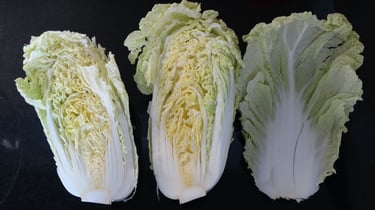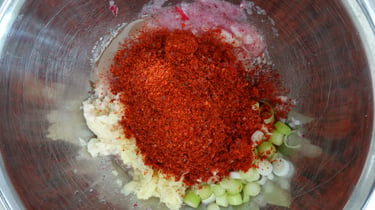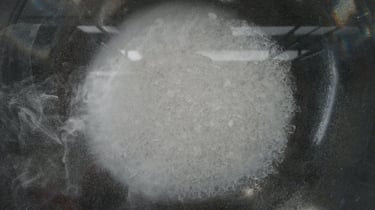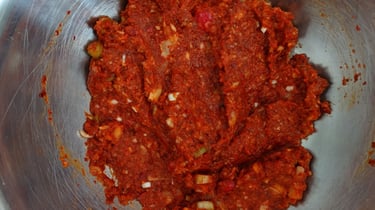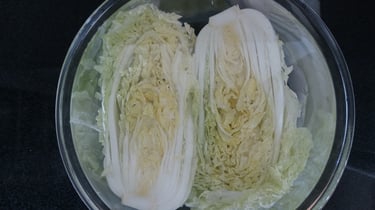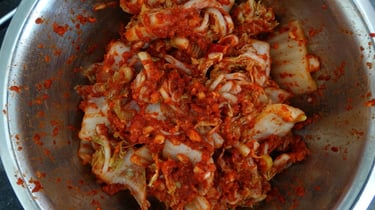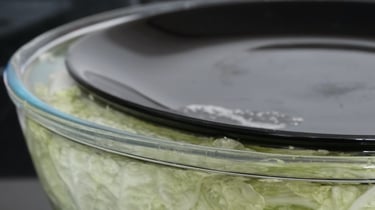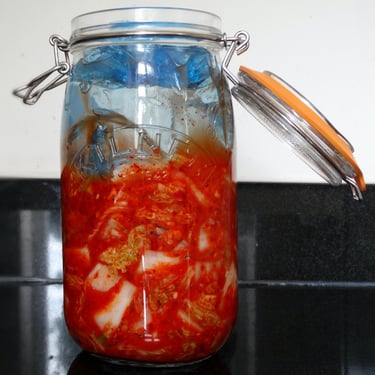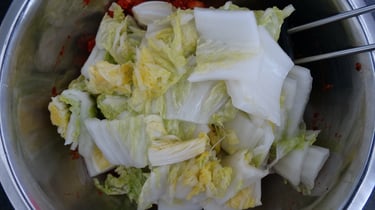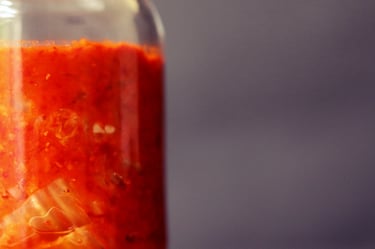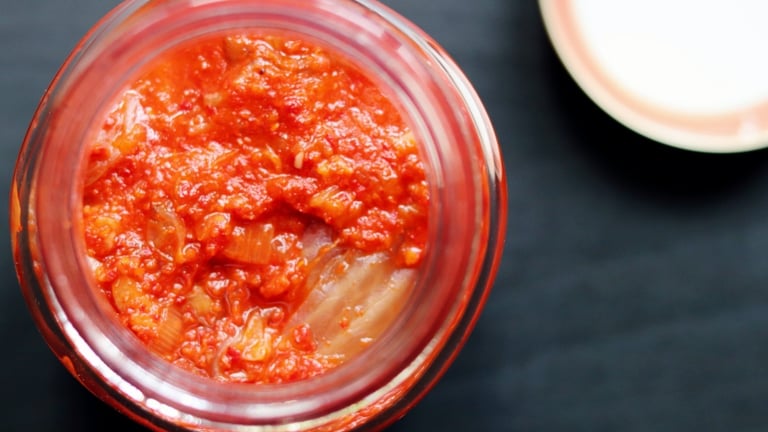Kimchi
Kimchi, like many things, gets better with age. While it takes time to ferment, it’s relatively effortless to make. My recipe stays close to the traditional version, though I’ve swapped daikon (large white radishes) for red radishes, which are easier to find. Daikon is milder, but red radishes work well with kimchi’s punchy flavour. If you can’t find gochugaru (red pepper powder) locally, it’s available online.
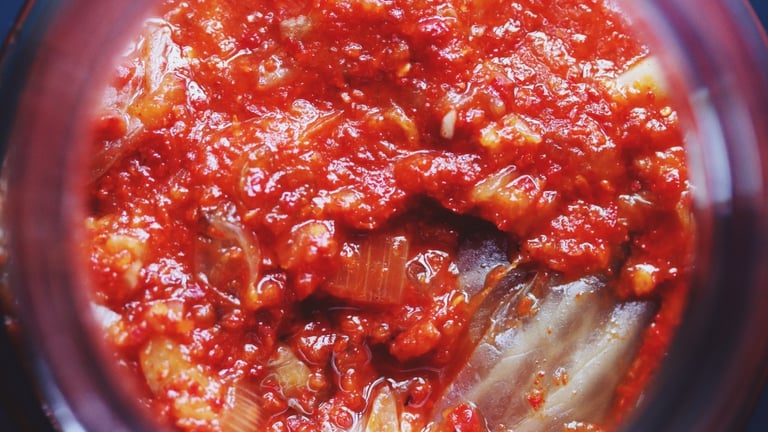

Makes approx 1kg
Hands-on Time 20 minutes (plus overnight to brine)
Fermentation time 1-2 weeks
Print friendly version
Ingredients
1 Chinese cabbage
1.5L filtered or bottled water
125g coarse sea salt
6 garlic cloves
Thumb-sized piece of root ginger
200g radishes
4 spring onions
60g gochugaru (Korean red pepper flakes)
40ml fish sauce
1 tbsp caster sugar
Equipment
Knife
Chopping board
2 large mixing bowls
Spoon
Plate
Kitchen paper
Food processor
Spatula
Disposable gloves (optional but recommended)
1.5L jar or container
Sealable food bag
2 x 500ml jars with lids
Method
1. Brine the cabbage
Remove one outer leaf from the cabbage and set aside. Cut the cabbage in half lengthways.
Dissolve the salt in the water in a large bowl. Submerge the cabbage halves and the reserved leaf in the brine, pressing out any trapped air. Weigh down with a plate and leave to soak overnight (not in direct sunlight).
2. Prepare the kimchi paste
Drain the cabbage and pat dry with kitchen paper. Reserve the brine.
Pulse the garlic, ginger, and radishes in a food processor until coarse. Transfer to a large bowl.
Finely slice the spring onions and add to the bowl with the gochugaru, fish sauce, and sugar. Mix well with a spatula.
3. Coat the cabbage
Keep the cabbage halves whole or chop into large chunks.
Coat every part of the cabbage with the paste. For whole halves, spread the paste between each leaf by hand (use gloves if preferred). For chopped cabbage, mix thoroughly in the bowl.
4. Ferment the kimchi
Pack the coated cabbage tightly into the 1.5L jar, pressing down to remove air pockets.
Place the reserved cabbage leaf on top as a lid. Add a little brine if the mixture seems dry.
Fill a sealable food bag with water and place it in the jar as a weight.
Seal the jar and leave in a cupboard to ferment for at least 1 week.
5. Store the kimchi
After 1 week, taste the kimchi. If ready, transfer to smaller jars, pressing down to remove air. If not, ferment for up to another week.
Seal the jars and store in the fridge for up to 6 months.
Enjoy!
Related Recipes:
